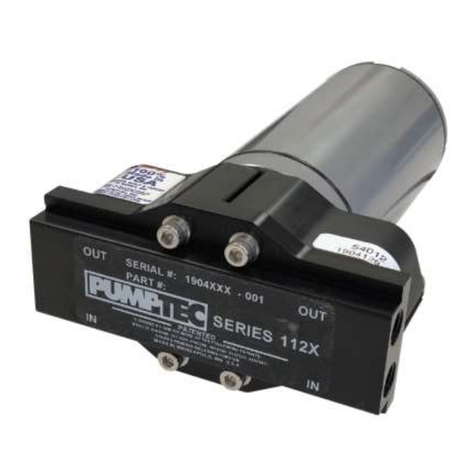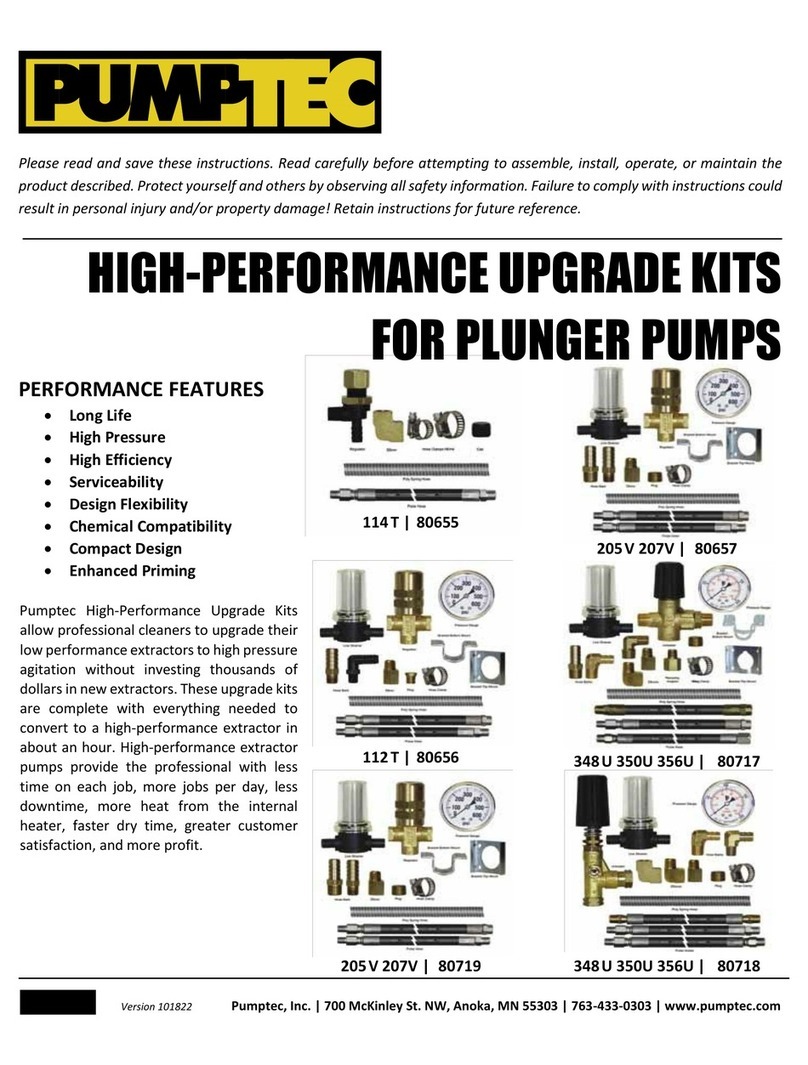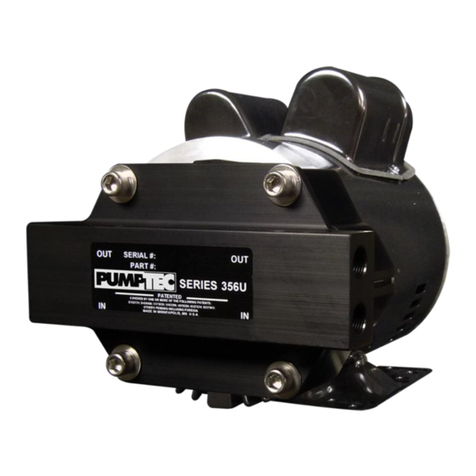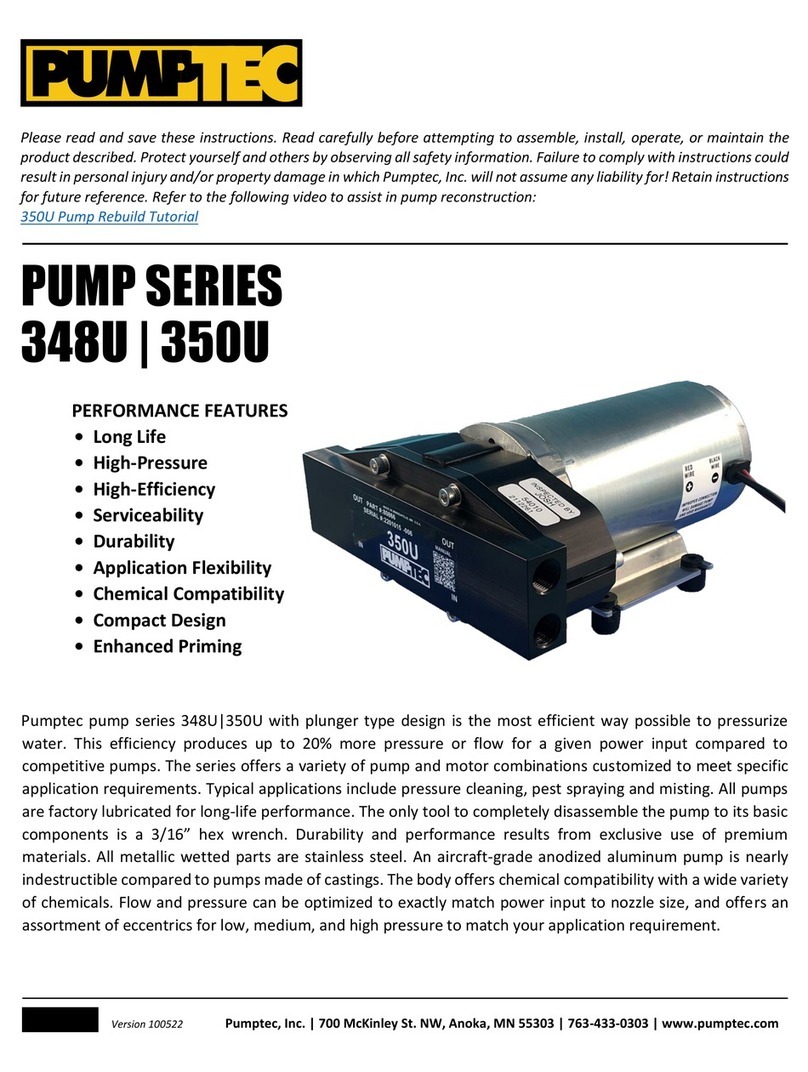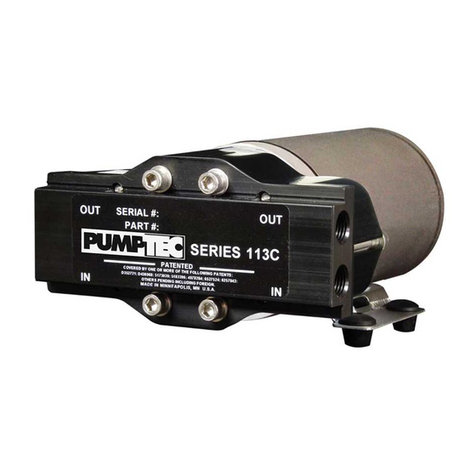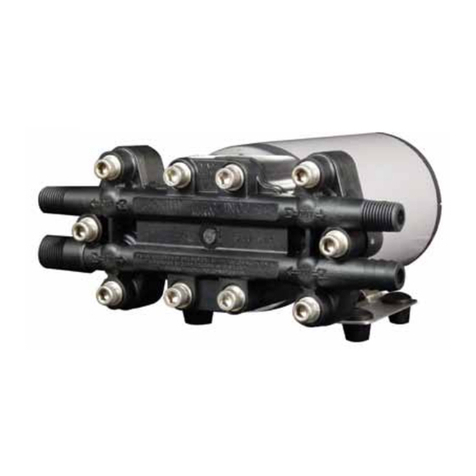BYPASS TO INLET –care should be exercised when deciding
the method of bypass from control valves.
• It is recommended that the bypass be directed to a baffled
reservoir tank, with at least one baffle between the bypass
line and the inlet line to the pump.
• Although not recommended, bypass liquid may be returned
to the inlet line of the pump if the system is properly
designed.
• A low-pressure, flexible hose should be used between the
bypass connection and the inlet of the pump.
• Caution should be exercised to avoid under-sizing the bypass
hose diameter and length.
•Check the pressure in the bypass line to avoid over-
pressurizing the system.
USING CHEMICALS
Chemicals can be mixed into the fluid, but it is necessary to
understand whether these chemicals will damage the pump or
other system components. Another way to put chemicals into
the fluid is with a downstream injector.
An injector works as a result of the difference in pressure
between the inlet side of injector and discharge side. In most
cases, the pressure on the discharge side cannot exceed 1/2 of
the inlet pressure. For example, 1000 PSI into an injector should
allow up to 500-600 PSI spray pressure on discharge side. There
are dual-function nozzles that permit high pressure, chemical
free rinse and low pressure, chemical spray. These are
convenient for the operator and will not harm a properly
designed system.
The advantages of an injector are:
-Fewer items touching the chemical
-Chemical injection rate can be controlled
-Applying chemical at lower pressure increases
chemical use efficiency.
HEATING FLUID
The pumps may sometimes be used with downstream heaters
and precautions need to be taken to protect the system and
persons from harm. Refer to the skilled staff at the equipment
manufacturer for guidance and proper system care. Please be
aware that heated water expands, and additional pressure
release safety devices may be required.
SYSTEM DESIGN
A pump is the heart of every system and proper selection is
critical to equipment function and durability. If a pumping set
with excess flow is chosen, then energy and fluid is wasted.
Equipment effectiveness can decrease if excess pressure
results, and so can pump life.
TYPICAL APPLICATIONS AND THEIR PERFORMANCE
CONSIDERATIONS
PEST SPRAYING
This application can have specific chemical usage requirements
and pressure limits, so use the included information as a guide
only. Refer to label requirements for each specific chemical.
LINE LOSS
When choosing a pump for spraying, pressure loss in the hose
must be considered. The pressure is greatest at the pump and
decreases over the length of the hose. Typically, these systems
utilize very long hoses, 200-300 ft. is common and requires a
certain minimum amount of performance to move the flow
through the lengths of hose. For example, a 3 GPM system will
require (lose) 50 PSI per 50 ft. of 3/8” ID hose. A pump with only
60-70 PSI may not provide the desired performance at the end
of the hose. See reference charts to assist in system design.
DO NOT return bypass fluids from regulator valve directly back
to the inlet of the pump. The returned fluid will contain large
amounts of air bubbles that will cause cavitation and damage in
the pump head. Also, the small amount of returned fluid can
heat up rapidly and lead to further cavitation and component
damage. It is recommended to route a bypass line back to the
inlet of a filter to allow air bubbles to dissolve and water to cool
prior to re-entering the pump.
The pumps are shipped assembled to a custom-made motor
based upon your specifications. It is not necessary to order a
motor separately. Communicate your specification needs and
the supplier will assist with pump options.
Please use the following charts as a guide to understand the
basic system requirements.
NOTE: Nozzle sizes in the performance chart are additive. For
example, two pieces of ’02 nozzle equals the performance of
one piece of ’04 nozzle.
Nozzles create restriction (pressure) in the system. If unsure of
the nozzle size needed for desired performance, refer to the
Nozzle Performance Chart. If you are sure of your nozzle size,
but unsure of which pump set to choose, use the Nozzle
Performance Chart along with the Horsepower Chart to
determine your required pump specification. See next page.
STORING
For extended storage times or between uses in cold climates,
drain all liquids from pump and flush with antifreeze solution to
prevent freezing and damage to the pump. DO NOT RUN PUMP
WITH FROZEN LIQUID.
NOTE: Each system’s maintenance cycle will be unique. If
system performance decreases, check immediately. If no wear
at 500 hours, check again at 1000 hours and each 500 hours
until wear is observed. Valves typically require changing with


